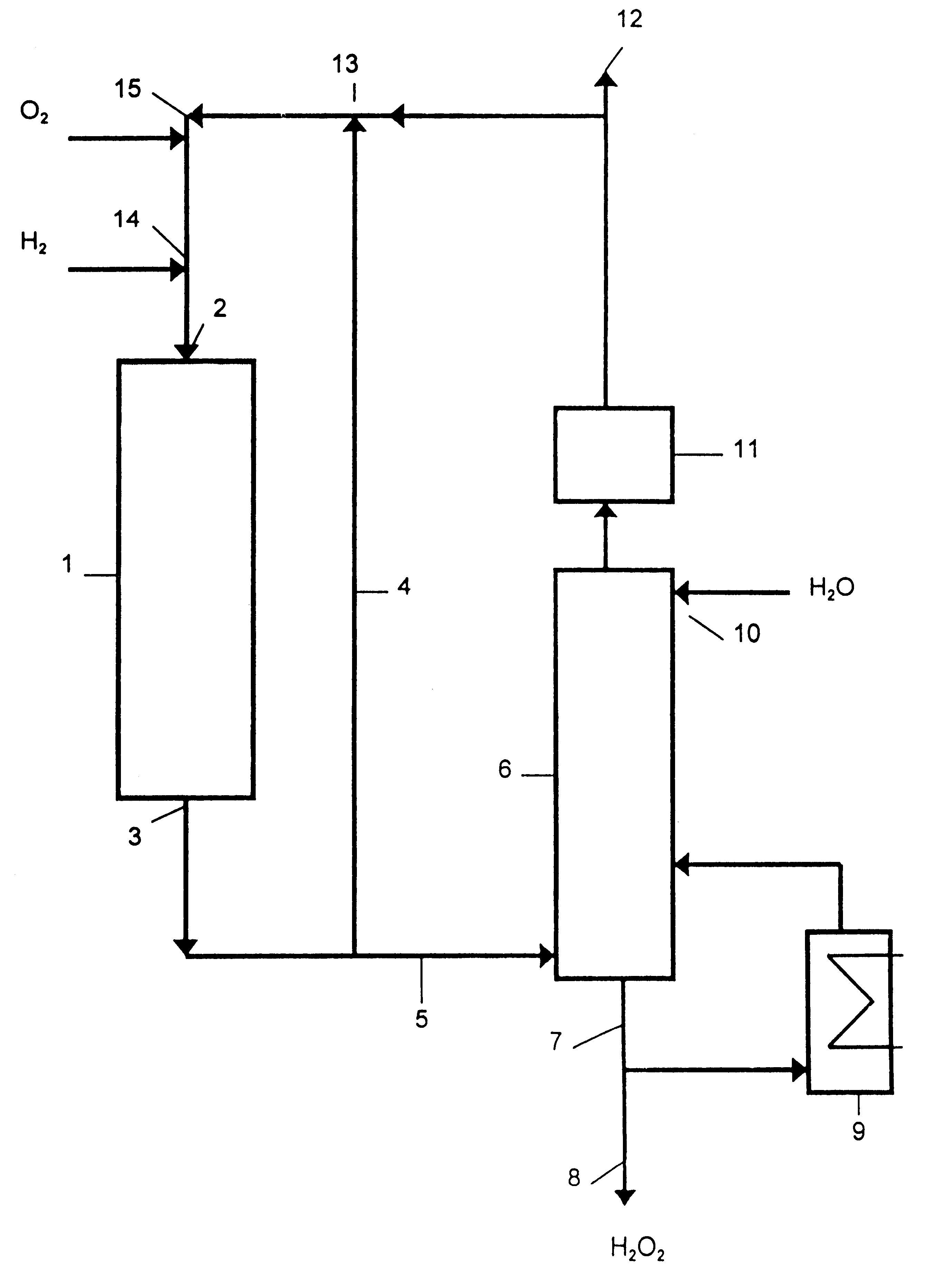Process for producing hydrogen peroxide
a hydrogen peroxide and process technology, applied in the direction of physical/chemical process catalysts, metal/metal-oxide/metal-hydroxide catalysts, catalyst carriers, etc., can solve the problems of difficult to obtain high concentrations of hydrogen peroxide, low selectivity, and rather slow hydrogen peroxide formation in these processes, and achieve high reaction rate and selectivity. high
- Summary
- Abstract
- Description
- Claims
- Application Information
AI Technical Summary
Benefits of technology
Problems solved by technology
Method used
Image
Examples
Embodiment Construction
20.times.5.times.0.11 mm PTFE foil was coated with a 50 nm thick palladium layer by vapour deposition at vacuum. The palladium coated foil was then subjected to a gas mixture of tetramethyl silane, oxygen and argon (molar ratio 1:5:5) in a high frequency field at vacuum which resulted in deposition of a 10 nm thick layer of siloxane completely covering the palladium. The hydrophocity, which depends on the number of oxygen crosslinks, was determined by measuring the contact angle. The catalyst was tested in a 750.times.6.3 mm cylindrical reactor into which a gas mixture of 3 mol % hydrogen, 50 mol % oxygen and 47 mol % nitrogen was fed at 30 N liter / h and at an absolute pressure of 15 bars. Before enterng the reactor the gas was bubbled through an aqueous bath containing 1 wt % H.sub.2 SO.sub.4 and 20 wt ppm NaBr at 50.degree. C. The gas at the exit of the reactor was bubbled through an aqueous bath of 1 wt % H.sub.2 SO.sub.4 to absorb the hydrogen peroxide therein.
Run 1: A catalyst ...
PUM
| Property | Measurement | Unit |
|---|---|---|
| thickness | aaaaa | aaaaa |
| thickness | aaaaa | aaaaa |
| contact angle | aaaaa | aaaaa |
Abstract
Description
Claims
Application Information
 Login to View More
Login to View More - R&D
- Intellectual Property
- Life Sciences
- Materials
- Tech Scout
- Unparalleled Data Quality
- Higher Quality Content
- 60% Fewer Hallucinations
Browse by: Latest US Patents, China's latest patents, Technical Efficacy Thesaurus, Application Domain, Technology Topic, Popular Technical Reports.
© 2025 PatSnap. All rights reserved.Legal|Privacy policy|Modern Slavery Act Transparency Statement|Sitemap|About US| Contact US: help@patsnap.com


